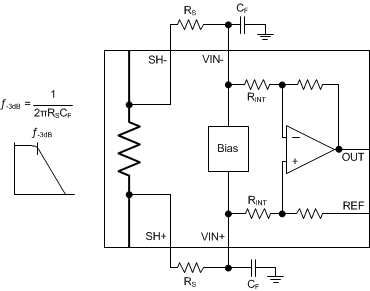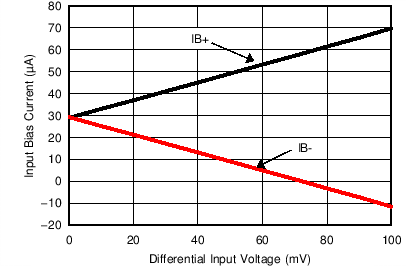ZHCSDO5C April 2015 – September 2023
PRODUCTION DATA
- 1
- 1 特性
- 2 应用
- 3 说明
- 4 Revision History
- 5 Pin Configuration and Functions
- 6 Specifications
- 7 Detailed Description
- 8 Applications and Implementation
- 9 Device and Documentation Support
- 10Mechanical, Packaging, and Orderable Information
7.4.2 Input Filtering
An obvious and straightforward location for filtering is at the device output; however, this location negates the advantage of the low output impedance of the output stage buffer. The input then represents the best location for implementing external filtering. Figure 7-4 shows the typical implementation of the input filter for the device.
 Figure 7-4 Input Filter
Figure 7-4 Input FilterThe addition of external series resistance at the input pins to the amplifier, however, creates an additional error in the measurement. Keep the value of these series resistors to 10 Ω or less, if possible, to reduce the affect to accuracy. The internal bias network illustrated in Figure 7-4 present at the input pins creates a mismatch in input bias currents when a differential voltage is applied between the input pins, as shown in Figure 7-5.
 Figure 7-5 Input Bias Current vs Differential Input Voltage
Figure 7-5 Input Bias Current vs Differential Input Voltage